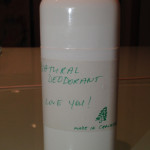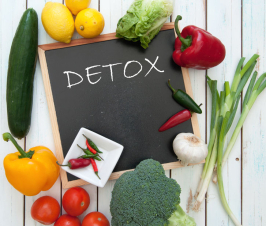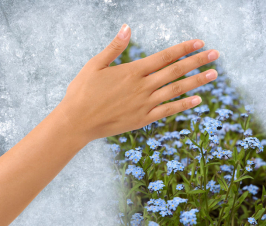Your skin is the largest organ in your body. It measures 20 square feet and has 3 different layers. The skin is specialized to keep microbes out, regulate body temperature and sense the environment.1 In terms of absorbing chemicals, the skin is a more significant route than the lungs.2 Particularly, products that are amphiphilic (water and fat dissolving) will penetrate into the deeper layers of the skin and into the blood stream. Amphiphilic molecules are called surfactants and they are present in products like lotion, creams, pesticides, eau de cologne, aftershave and mouthwash.3
How many or how much of these products go into our blood stream? No one really knows, many of them haven’t been tested. There are over 82,000 industrial chemicals used in personal care products. One in eight of these are known carcinogens, pesticides, reproductive toxins and hormone disruptors.4
A company called Bionsen did some research and found that the average woman puts about 515 synthetic chemicals on her skin each day.5
Check out the link for a graphic.
How many products do you put on, or in, your body each day. Here is a list of possible options:
- Toothpaste
- Mouthwash
- Soap
- Shower gel
- Shaving cream
- After shave
- Perfume/Cologne
- Lotion
- Cream
- Shampoo/Conditioner
- Hair Styling products
- Deodorant
- Sunscreen
- Makeup (eye liner, mascara, blush/bronzer, foundation, eye shadow, cover up)
- Lip balm/stick/gloss
- Bath salts/bubbles
- Dish soap
- Air freshener
- Dryer sheets
- Fabric softener
- Laundry soap
- Bathroom cleaner
- Kitchen cleaner
Role of the Liver
It’s the job of the liver to detoxify our system. In today’s world, with all the chemicals we encounter in body products, food and the environment, that is quite a burden. When our detoxification system gets backed up, either from too many toxins going in, or not enough substrates to supply the metabolic reactions, we can feel it: fatigue, nausea, headaches, skin irritation, body pain, abdominal tenderness and pungent sweat to name a few. The liver processes and removes the excess hormones and hormone metabolites from our bodies. An over burdened system can also have hormone imbalances such as weight gain, acne, painful periods, fibroids and PMS. Decreasing our toxin load helps the liver process toxins for removal rather than recirculating and reabsorbing them causing health issues.
What Can I Do To Decrease My Toxin Load?
Eat Organic!
Eating organic eliminates pesticide toxicity from food. An easy way to start eating organic is to have a look at The Dirty Dozen list. These are the foods that are sprayed most and which should be avoided. There is also a Clean 15, the foods you can buy conventionally which will have a lower pesticide incidence.
Use Natural Household Cleaners
Products with orange essential oil and vinegar are examples of natural house hold cleaners. They don’t use harsh detergents or chemicals to get rid of bacteria but they work just as well. Frog Wash is an example of a natural cleanser I like.
Use or Make Your Own Natural Body Products

Chemicals commonly found in deodorant include: aluminum compounds, triclosan, parabens, propylene glycol and steareths. These chemicals are linked to breast and prostate cancer and an increased risk of Alzheimer’s disease. They mimic estrogen in the body and are considered endocrine disruptors and lead to early puberty in children. A 2004 study found parabens in 18 out of 20 breast cancer tissue samples4.
Deodorant is a very easy product to make. This recipe is uplifting and effective in both temperate and tropical climates.
Deodorant Recipe
Ingredients
- 2 tbs coconut oil
- 2 tbs baking soda
- 2 tbs cornstarch
- 5-8 drops Essential oil (Rosemary, Tea Tree, Lemongrass, Lavender, Sage, its up to you! Choose one or make a mix)
– In a saucepan on low, heat the coconut oil up just until it melts. Add in the other ingredients and stir. Pour into a small glass container or an old deodorant container. If you are using an old deodorant container, keep it in the fridge. It is easier to put on when it is solid.
– Remember: to dip your fingers in when they are clean, and do not double dip. There is no preservative in your natural product so you don’t want to contaminate it with bacteria. Apply everyday after a shower.
 Dr. Ariel Jones is a native of Vancouver BC and a graduate of BINM (2013). Her practice emphasizes removing the physical, mental and spiritual obstacles to cure while implementing a toxin-free lifestyle for raw, radiant health. Ariel has enjoyed living in Victoria, BC during her BSc. in biology and psychology, Calgary AB and Hilo Hawaii for a post-graduate residency focused on raw food diet, detoxification, addictions and cancer therapies.
Dr. Ariel Jones is a native of Vancouver BC and a graduate of BINM (2013). Her practice emphasizes removing the physical, mental and spiritual obstacles to cure while implementing a toxin-free lifestyle for raw, radiant health. Ariel has enjoyed living in Victoria, BC during her BSc. in biology and psychology, Calgary AB and Hilo Hawaii for a post-graduate residency focused on raw food diet, detoxification, addictions and cancer therapies.
References:
- MD, W. The Skin (Human Anatomy): Picture, Definition, Function, and Skin Conditions. WebMD. 2014. Available at: http://www.webmd.com/skin-problems-and-treatments/picture-of-the-skin. Accessed April 16, 2015.
- Safety and Health Topics | Dermal Exposure. Safety and Health Topics | Dermal Exposure. Available at: https://www.osha.gov/sltc/dermalexposure/. Accessed April 16, 2015.
- Rhein, LD. Surfactants in personal care products and decorative cosmetics. 3th ed. Boca Raton: CRC Press; 2007.
- Suzuki Foundation, D. ‘Dirty Dozen’ cosmetic chemicals to avoid. David Suzukiorg. 2010. Available at: http://www.davidsuzuki.org/issues/health/science/toxics/dirty-dozen-cosmetic-chemicals/. Accessed April 16, 2015.
- Rice, M. Revealed the 515 chemicals women put on their bodies every day. Mail Online. 2009. Available at: http://www.dailymail.co.uk/femail/beauty/article-1229275/revealed–515-chemicals-women-bodies-day.html. Accessed April 17, 2015.

















